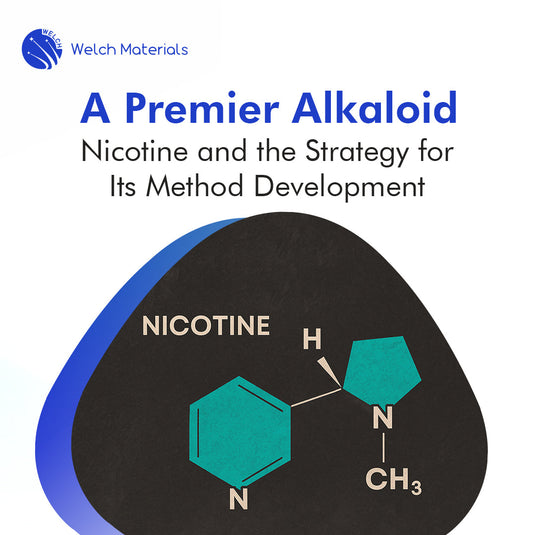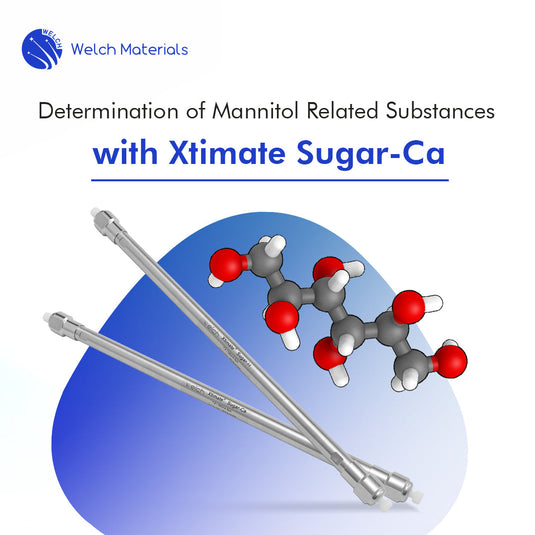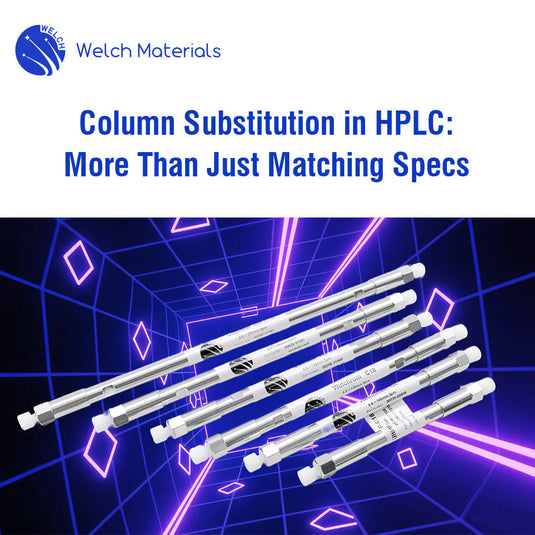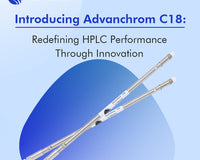Knowledge Base
-
![[Readers Insight] Choose Methanol or Acetonitrile? The Organic Mobile Phase in HPLC](//www.welch-us.com/cdn/shop/articles/1080_746151f5-d530-4722-b64b-4cc9cff7a1d3_535x.jpg?v=1765506053)
[Readers Insight] Choose Methanol or Acetonitrile? The Organic Mobile Phase in HPLC
In HPLC analysis, methanol and acetonitrile are the most common organic mobile phases. But have you ever thought about what exactly differentiates them? When should methanol be used and when acetonitrile? In this article, the author shares their thoughts on this matter. -

Understanding HPLC Pumps (Part II): Practical Maintenance
In the second part of this article, we explain the composition of an HPLC pump and the terminologies behind, as well as practical troubleshooting and preventive maintenance methods and schedules to pump failures. -

Understanding HPLC Pumps (Part I): Common Misconceptions
In the first part of this article, we explain common misconceptions of HPLC pumps, from the number of pump channels (and why they don't equal the number of pump heads or modules) to the differences between high- and low-pressure systems, and parallel and serial pumps. -
![[Readers Insight] HPLC Column Selection: Core to Method Development (Part II)](//www.welch-us.com/cdn/shop/articles/1080-1105-2_b4aa3b37-ea3f-4e79-a57a-c6d3b30d6233_535x.jpg?v=1765505696)
[Readers Insight] HPLC Column Selection: Core to Method Development (Part II)
In this article, the author shares their answers for 8 common questions in column selection, aiming to guide users in choosing the most suitable column through practical experimentation. -
![[Readers Insight] HPLC Column Selection: Core to Method Development (Part I)](//www.welch-us.com/cdn/shop/articles/columnselection2-1080-1105_535x.jpg?v=1762395940)
[Readers Insight] HPLC Column Selection: Core to Method Development (Part I)
A chromatographic column is the heart of separation. However, with thousands of column options on the market, it is often asked how to choose "the best one". In this article, the author explains the classifications of HPLC columns and how to select the most cmpatible column for an analyte. -
![[Readers Insight] Why Do Ghost Peaks Appear?](//www.welch-us.com/cdn/shop/articles/ghost-peak-1080-1029_535x.jpg?v=1761900878)
[Readers Insight] Why Do Ghost Peaks Appear?
In this article, we examine the common origins of ghost peaks in HPLC. From mobile phase contamination and instrument residues, to column impurities and sample-related degradation, the article explains how they contribute to the appearance of ghost peaks. -
![[Readers Insight] Is Retention Time Determined Solely by the Polarity of a Compound?](//www.welch-us.com/cdn/shop/articles/ret-time-1080-1027_535x.jpg?v=1761555907)
[Readers Insight] Is Retention Time Determined Solely by the Polarity of a Compound?
Have you ever thought about this question: In reversed-phase chromatography, does an earlier elution always mean the compound has higher polarity? Or rather — is retention time determined solely by the polarity of a compound? In this article, we explore what polarity is, why it acts as the primary factor affecting retention time, and what other factors are unneglectable. -
![[Readers Insight] Mobile Phase Selection in Method Development: How to Optimize](//www.welch-us.com/cdn/shop/articles/mpoptimize-1080-1020_535x.jpg?v=1762394840)
[Readers Insight] Mobile Phase Selection in Method Development: How to Optimize
In method development, the selection of mobile phases is an important part to success. This article discusses thoroughly different mobile phases and their use in HPLC and LC-MS, and provides recommendations for initial mobile phase choices. -
![[Readers Insight] Retention Time Drifts: Why Do They Occur?](//www.welch-us.com/cdn/shop/articles/1080-1017-2_535x.jpg?v=1761027048)
[Readers Insight] Retention Time Drifts: Why Do They Occur?
Learn the causes of retention time drift in HPLC analyses, explained thoroughly through mobile phase, column, instrument, and sample solvent. -

A Premier Alkaloid: Nicotine and the Strategy for Developing Its Determination Method
Nicotine analysis is notoriously challenging due to its weak retention on conventional columns. This article shares a practical UHPLC-MS method using the Welch Ultisil HILIC Amphion II column, detailing the development approach, chromatographic conditions, and key advantages for reliable nicotine detection. -

Determination of Mannitol Related Substances with Xtimate Sugar-Ca
Mannitol is a substance with important applications in pharmaceutical and food. See how Welch Xtimate Sugar-Ca columns perform well in determination of mannitol related substances in accordance with Chinese Pharmacopoeia 2025 Edition. -

Column Substitution in HPLC: More Than Just Matching Specs
When considering HPLC column replacements, cross-reference charts can only tell half the story. Read to learn how a right Welch Column goes beyond replacement—delivering optimized results tailored to your method.






![[Readers Insight] Choose Methanol or Acetonitrile? The Organic Mobile Phase in HPLC](http://www.welch-us.com/cdn/shop/articles/1080_746151f5-d530-4722-b64b-4cc9cff7a1d3_535x.jpg?v=1765506053)


![[Readers Insight] HPLC Column Selection: Core to Method Development (Part II)](http://www.welch-us.com/cdn/shop/articles/1080-1105-2_b4aa3b37-ea3f-4e79-a57a-c6d3b30d6233_535x.jpg?v=1765505696)
![[Readers Insight] HPLC Column Selection: Core to Method Development (Part I)](http://www.welch-us.com/cdn/shop/articles/columnselection2-1080-1105_535x.jpg?v=1762395940)
![[Readers Insight] Why Do Ghost Peaks Appear?](http://www.welch-us.com/cdn/shop/articles/ghost-peak-1080-1029_535x.jpg?v=1761900878)
![[Readers Insight] Is Retention Time Determined Solely by the Polarity of a Compound?](http://www.welch-us.com/cdn/shop/articles/ret-time-1080-1027_535x.jpg?v=1761555907)
![[Readers Insight] Mobile Phase Selection in Method Development: How to Optimize](http://www.welch-us.com/cdn/shop/articles/mpoptimize-1080-1020_535x.jpg?v=1762394840)
![[Readers Insight] Retention Time Drifts: Why Do They Occur?](http://www.welch-us.com/cdn/shop/articles/1080-1017-2_535x.jpg?v=1761027048)


